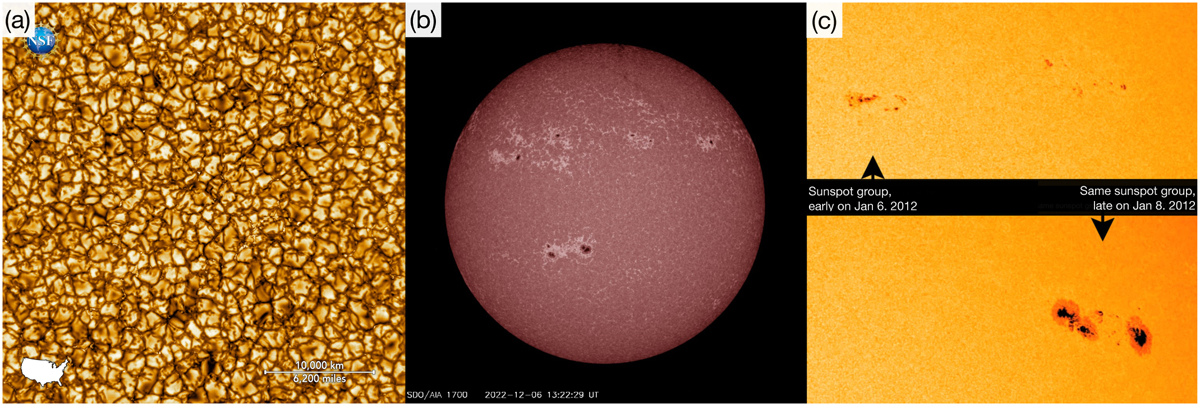Fig. 1

Download original image
(a) Inouye Solar Wave Front Correction (WFC) image, captured on Jan. 28, 2020, at 789 nm. The granulated structures around the spot are due to convection: hot plasma moves upward at the center of granules, cools down, and goes downwards between granules (darker intergranular regions). The contribution of brighter intra-granular regions exceeds that of intergranular ones, creating a so-called convective blueshift on observed spectra. Credit: NSO/AURA/NSF. (b) SDO observation of the Sun at wavelength 1700 Å. The bright regions are called faculae, and the dark regions are called spots. Both faculae and spots inhibit the upward convective motion of the gas (Dravins et al. 1981). Faculae cover more area than spots, but have a smaller temperature contrast with the quiet surface. The latitude, number, and lifetime of the spots varies along stellar magnetic cycles, on the timescale of a few years (11 years for the Sun). Courtesy of NASA/SDO and the AIA, EVE, and HMI science teams. (c) Group of sunspots observed at two different dates, top: January 6, 2012, bottom: January 8, 2012. Courtesy of NASA/SDO.
Current usage metrics show cumulative count of Article Views (full-text article views including HTML views, PDF and ePub downloads, according to the available data) and Abstracts Views on Vision4Press platform.
Data correspond to usage on the plateform after 2015. The current usage metrics is available 48-96 hours after online publication and is updated daily on week days.
Initial download of the metrics may take a while.


